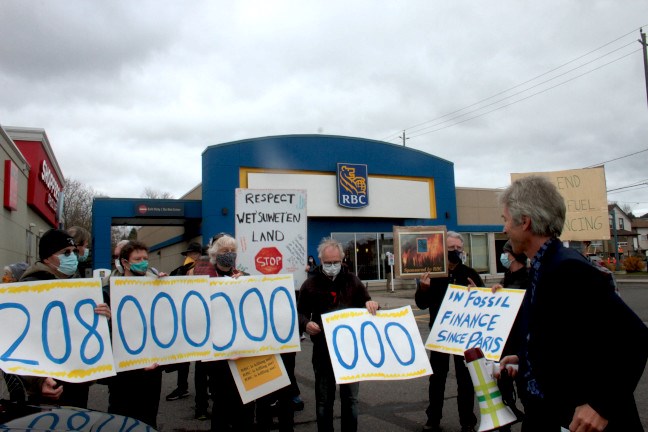Frik Els | October 28, 2021 |

Copper ore. Image: Glencore
“The International Energy Agency’s annual World Energy Outlook [..] is probably the closest thing to a bible in the energy world,” says a Bloomberg article following the publication of the 2021 edition.

Released earlier than usual in time for the Conference of Parties (COP26) starting in Glasgow next week, this edition – the 44th – “has been designed, exceptionally, as a guidebook to COP26”.
At 386 pages IEA WEO 2021 is quite the tome (download here). Under Section 6.3.1, you’ll find the energy bible’s take on “critical minerals”. It is six pages in total.
Those six pages may be headlined critical minerals, but it’s hard to detect a sense of urgency in Section 6.3.1:
“The rapid deployment of low-carbon technologies as part of clean energy transitions implies a significant increase in demand for critical minerals.”
We have questions
The word “significant” used here contains multitudes (lithium “100 times current levels” according to the IEA’s own calculations) and the Paris-based firm has some questionne:
“The prospect of a rapid increase in demand for critical minerals – well above anything seen previously in most cases – raises questions about the availability and reliability of supply.”
With only six pages to work with, the IEA has to be succinct in its appraisal of the mining industry:
“The [supply] challenges are compounded by long lead times for the development of new projects, declining resource quality, growing scrutiny of environmental and social performance and a lack of geographical diversity in extraction and processing operations.”
Questions raised. Challenges compounded. Take that global warming!
Mining ghost protocol
Edinburgh-based Wood Mackenzie has also been doing some research ahead of COP26.
Woodmac, which beat the IEA by four years, releasing its first oil report in 1973, is expanding its mining and metals practice, most recently with the acquisition of London-based Roskill.
A new report by Julian Kettle, SVP of Woodmac’s metals and mining division, and senior analyst Kamil Wlazly, answers the questions about the availability of supply in the very title:
Mission impossible: supplying the base metals for accelerated decarbonisation
Woodmac is refreshingly blunt in its assessment of mining’s role in fighting climate change:
“The energy transition starts and ends with metals.”
“Achieving global net zero is inexorably linked to base metals supply.”
“Base metals capex needs to quadruple to about $2 trillion to achieve an accelerated energy transition.”
Whoomp, there it is.
The hidden ones
There are many eye-popping graphs in Mission impossible (download here) but this one perfectly illustrates why the decarbonisation goals of the Conference of Parties, without plans for new mines, only add hot air to the warming planet.
Woodmac gets straight to the point: “delivering the base metals to meet [net zero 2050] pathways strains project delivery beyond breaking point from people and plant to financing and permitting.”
Copper, which Woodmac emphasizes “sits at the nexus of the energy transition” stands out particularly.
The 19 million tonnes of additional copper that need to be delivered for net-zero 2050 implies a new La Escondida must be discovered and enter production every year for the next 20 years.
Even if you focus on just one of the obstacles bringing new copper supply online – the time it takes to build a new mine – and leave aside all other factors, net-zero 2050 has zero chance.
Great great grandfathered in
Consider that among the world’s largest copper mines, La Escondida is a relative newcomer – it was discovered in 1981, and only hit 1 million tonnes 20 years later. (MINING.COM’s official measure of copper production is the escondida which equals one million tonnes.)
The weighted average discovery year of the planet’s top 20 biggest copper mines is 1928. US number one mine Morenci (less than half an escondida in 2020) was discovered in 1870. Chile and the world’s number two copper mine Collahuasi (O.63 escondida) dates back to 1880.
When Congo’s Kamoa-Kakula went into production in May this year it was the biggest new mine to do so since Escondida. By 2028 it will produce 840,000 tonnes a year. Kamoa-Kakula is a poster child for rapid mine development, yet Robert Friedland’s exploration team discovered the deposit back in 2003.
Let it be resolved
With ample reserves, the US has a number of uncommitted projects that would support the Conference of Parties and their wannabe cheerleader, the Biden administration, advancing its climate goals.
A top contender is the Resolution project in Arizona, near the town of Superior in the area known as the Copper Triangle.
Contained copper tops 10 million tonnes making it the sixth-largest measured deposit in the world. It’s an underground high-grade mine that shrinks its environmental footprint.
The world’s number one and two mining companies, BHP and Rio Tinto, have already spent $2 billion on it, including reclamation of a historical mine. The deposit was discovered in 1995 and 26 years later remains stuck in permitting hell.
Looks like a perfect candidate for fast track approval to help with those lofty climate goals and create those millions of promised green jobs.
Right? Trump – five days before leaving office – publishes a pivotal environmental report on the project.
Wrong. Biden rescinds the study and Democrats add specific wording to the $X.X trillion infrastructure bill that would block Resolution from going ahead.
Perhaps not surprising then, the news that BHP and others are looking at the previously shunned African copperbelt.
When central Africa is a friendlier jurisdiction for miners than the US, there may be something wrong with your strat… For more see above and below.
We process, you dig
The White House’s policy is one of relying on other countries to supply metals to the US because “it’s not that hard to dig a hole. What’s hard is getting that stuff out and getting it to processing facilities.”
A strategy that worked so well for the US with rare earths.
Perhaps the White House got the idea from Indonesia, which insists miners build processing plants and refineries to own the entire battery metal supply chain and by extension huge chunks of electric vehicle manufacture.
Tiny difference though: the grand design of Jakarta, like Beijing, Santiago, et al, includes the first link in the supply chain.
And when things go wrong in metals supply for automaking, they go really wrong, as the EU found out this month.
Overburdening overburden
Biden desperately wants a deal before COP26 to brag about all the ways it fights emissions by subsidizing American electric cars, windmills and solar panels overseas lithium, nickel, cobalt, copper, silver, and rare earth mining companies.
As if the permitting process isn’t torture enough, there’s more in Biden’s bill that’ll make miners and explorers gnash their teeth and pull their hair out.
Also included in the reconciliation spending measure is an 8% gross – yes, gross isn’t it – royalty on existing mines and 4% on new ones. New ones? Ha!
There would also be a 7 cent fee for every tonne of rock moved.
This is a particularly stupefying proposal. Not easy to find anything in the tax code that shows this kind of ignorance of how an industry operates, but it would not be dissimilar to taxing farmers for every acre ploughed (multiplied by the length of the blades just to make sure you precisely measure the displaced dirt), regardless of any harvest.
What’s another year
It was two years ago almost to the day on the occasion of a Greta Thunberg protest in MINING.COM’s hometown of Vancouver, that this paper declared Thunberg and Alexandria Ocasio-Cortez as the mining industry’s unlikely heroines.
We urged miners to embrace the goals of the environmental movement and initiatives like the Green New Deal.
With all the glaring holes drilled into COP26’s decarbonisation plans, it sure feels like it was Greta and AOC that copped out of this embrace, not mining.
























